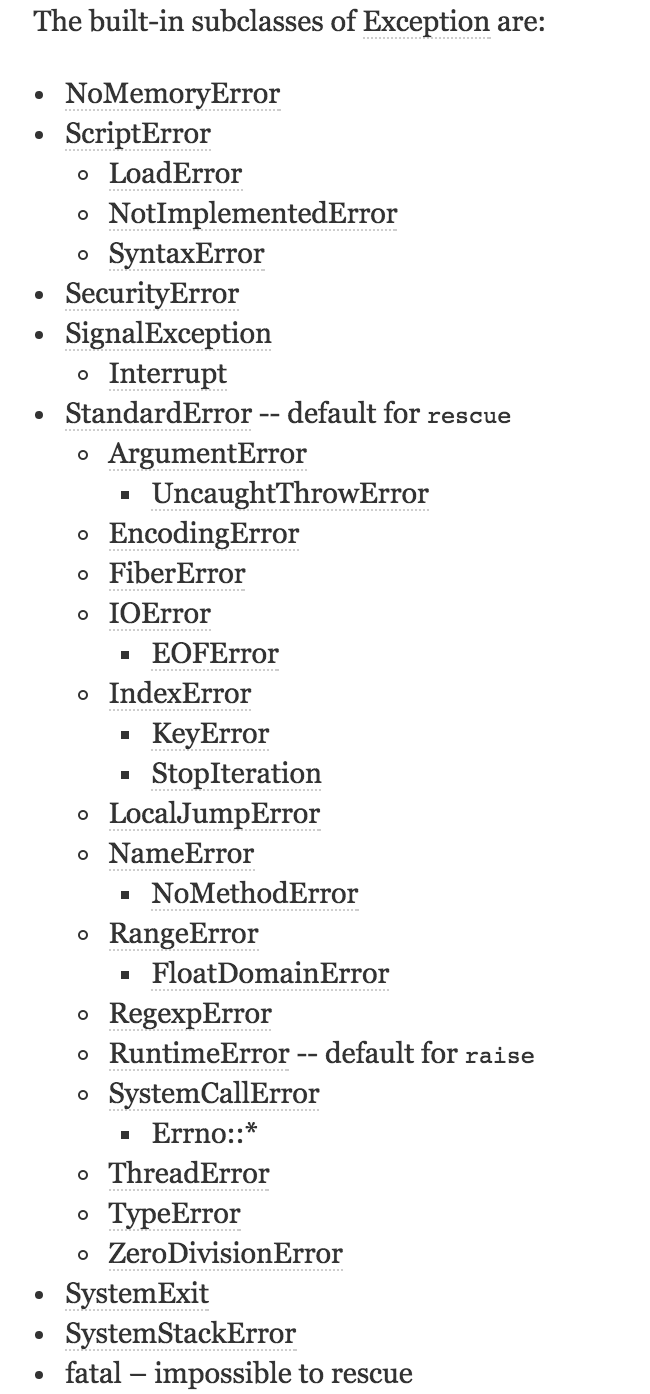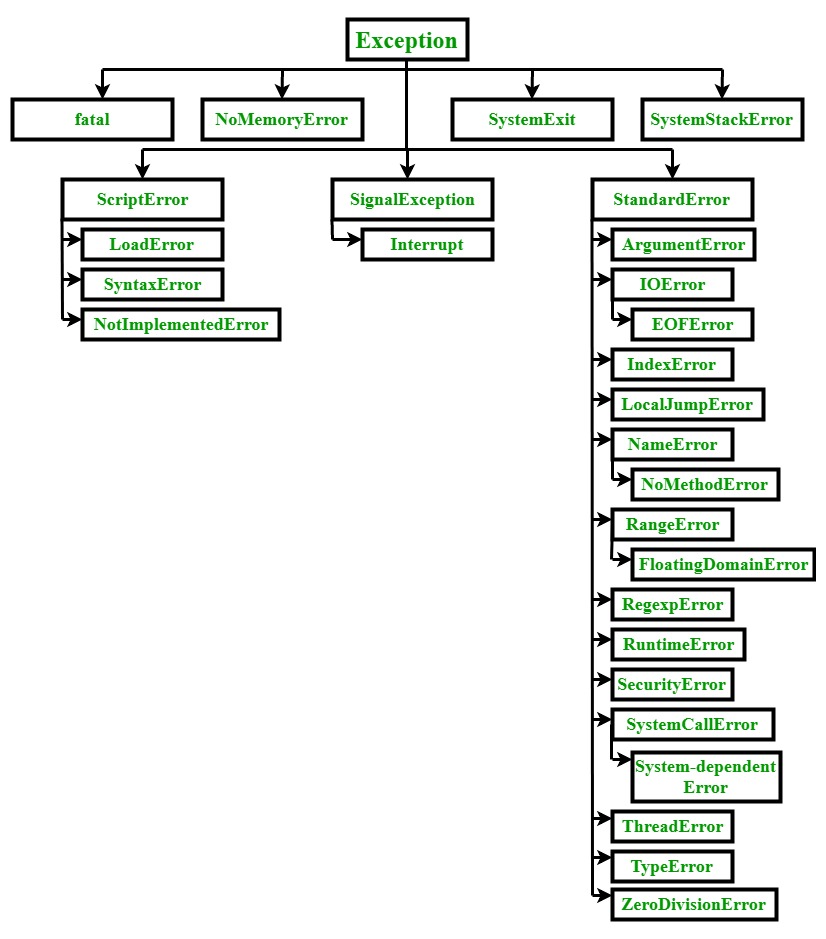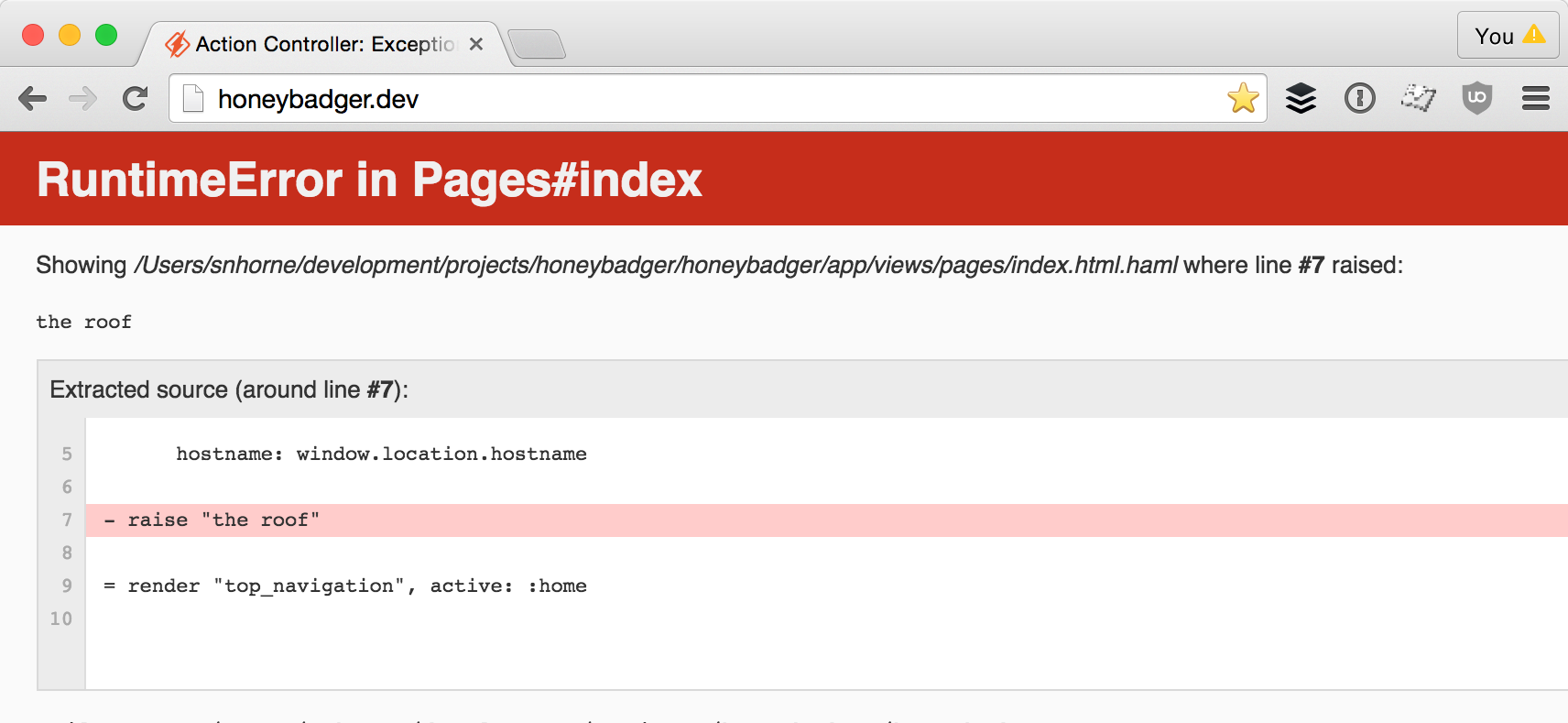To do exception handling we enclose the code that could raise an exception in a begin end block and use one or more rescue clauses to tell ruby the types of exceptions we want to handle.
Ruby raise exception in rescue.
In ruby like in most languages an exception is a way to convey that something went wrong.
It is to be noted that the body of a method definition is an implicit begin end block.
Raise is a keyword in ruby which allows us to raise any exception if it found raise will throw an exception and that exception will be caught inside the rescue statement.
Become a better developer.
Although libraries can define their own exception subclasses the list of built in exception subclasses on ruby 2 5 looks like this.
In a nutshell every custom ruby exception should extend standarderror rather than the exception class the reason for this is outlined in exception handling in ruby with this in mind the simplest custom exception class that we can define will look something like this.
In this article you ll learn how to use the rescue keyword in combination with begin to handle ruby exceptions the most effective way.
Ruby s exception handling mechanism is simple.
Ruby s built in exceptions are great but they don t cover every possible use case.
While some languages only use exceptions for truly exceptional circumstances like run time errors ruby uses exceptions for a wide variety of errors and unexpected results.
It places the keyword rescue after any code that would probably throw an exception.
How to handle an exception.
Ruby provide a nice mechanism to handle exceptions.
The general syntax for the rescue statement is as follows.
The exception hierarchy ruby s exception hierarchy is used to differentiate between different types of errors while giving you the ability to rescue from a group of errors without specifying all of them.
We enclose the code that could raise an exception in a begin end block and use rescue clauses to tell ruby the types of exceptions we want to handle.
In this article we will look at.
The begin is omitted and the entire body of the method is subject to exception handling ending.
Ruby does require some form of begin to appear before the rescue.









